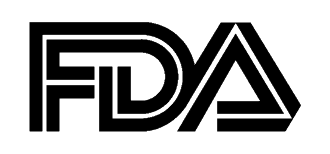
The US FDA Commissioner Scott Gottlieb, stated that as flu activity remains widespread across the US, the agency continues to monitor this situation closely and in coordination with our colleagues at the US Centers for Disease Control and Prevention. We’re continuing to take steps to help ensure that people with the flu have access to critical medical products, including antivirals, saline and other supportive care drugs and devices.
This year’s flu season has been particularly challenging, with a notable number of cases leading to hospitalization. The season started earlier than usual and seemed to spread across many states quickly. H3N2, the predominant strain of the influenza A virus this season, has led to health complications that are more severe than those seen during an H1N1-predominant season. We recognize that managing the thousands of flu-related hospitalizations has increased the demand for certain saline products – which are commonly used to both hydrate and deliver medications via intravenous routes. As we’ve shared over the past several months, across the country, there remains a shortage of IV saline bags, which have long faced supply issues. These supply issues were worsened by the impact of Hurricane Maria on the medical products manufacturing sector in Puerto Rico, which impacted small volume IV bags. Although the saline shortage is improving, this year’s worse-than-normal flu season and workarounds deployed by health care providers in the wake of this shortage have increased demand for saline and other products.
The products include large volume saline bags typically used to hydrate patients; small volume IV saline bags (generally in 50 and 100 ml sizes) that are often used to deliver other medicines; as well as empty IV containers of varying sizes that are being used by many health care providers to compound their own IV saline solutions by filling these empty containers. As such, we’re actively working to improve the large and small IV bag shortage and tracking potential shortages of critical medical products, such as the empty IV containers.
We are also hearing from some health care providers that there are spot shortages of some antivirals used to treat the flu and flu tests; however, at this time, there is no nationwide shortage of these products. The FDA is carefully monitoring the situation and we will provide updates as needed. Along with antivirals and device products we are also monitoring influenza vaccine supplies. While there have been some reported spot shortages, flu vaccines are still available. I strongly encourage anyone who hasn’t had a flu shot to get one and anyone experiencing flu-like symptoms to promptly consult with their health care provider about appropriate treatment options.
We continue to work closely with the companies that manufacture saline to limit and improve the shortage issues using all our various tools and resources. We’re committed to updating you on the ongoing saline shortage. With the increased demands for saline due to the flu season, I wanted to share more about our new and ongoing work to address cascading supply issues.
While we expect supplies of saline to increase over the next month, having adequate supplies, especially during this severe flu season, is a critical matter of public health. Most recently, the FDA was able to extend the expiration dates of certain products, including some 500 ml size saline bags, after carefully examining the data submitted by the company to ensure that it meets the FDA’s quality and safety standards. We continue to encourage companies to submit data to extend expiration dates for drugs in shortage. We’ve also been working with manufacturers such as Baxter and B. Braun to import products into the U.S. from their foreign facilities, including most recently additional products from a Baxter facility in Brazil.
We’ve also been proactively engaging with providers, manufacturers, distributors and other partners to identify and address issues impacting other products – like the empty IV containers I mentioned. By engaging with these partners, we can better identify the types of empty IV containers and other medical products that are most in demand. We’re also working to identify the specific features of products that are preferred or required by health care providers, such as size or function of the containers. We’re using this aggregated information -- and sharing it with existing and new manufacturers -- to help identify existing supply gaps. We’re taking steps to fill these gaps. Several manufacturers have indicated to us that they have the potential to initiate or ramp up production of empty IV containers to help address these public health risks. We’re grateful that they have indicated a willingness to do their part to help mitigate these challenges. We’re communicating directly with these companies, which include Douglas Medical Products Inc., Summit Medical Products Inc. and Valmed SRL.
While we expect that the flu season will peak soon, we’re committed to working with our partners to address the challenges we face until this severe flu season ends. We are also optimistic that saline supplies will continue to improve over the coming weeks. But, we recognize that rising demand for these products may continue to put a strain on availability, even as production and supply grow. We remain committed to looking at innovative ways that we can connect partners across the supply chain to find solutions and foster communication. The hurricanes and flu season have underscored the importance of preparedness and connectivity across the agency, the industries we regulate, as well as distributors and health care providers to best serve patients that need access to these critical products.
Us fda takes effort, mitigate impact, saline shortages during flu season